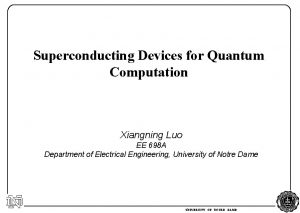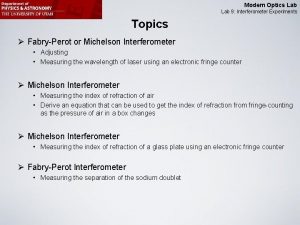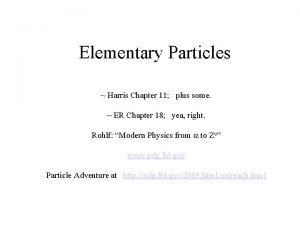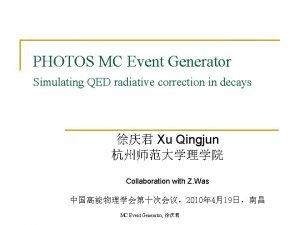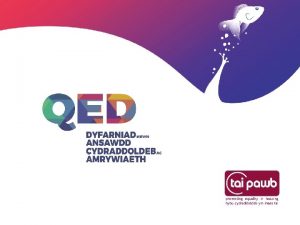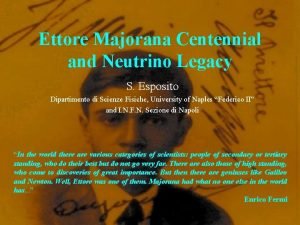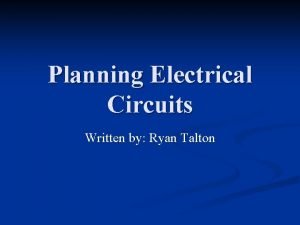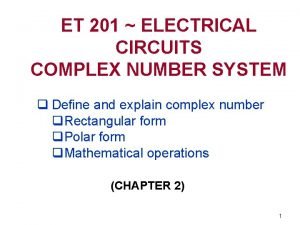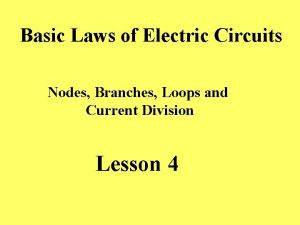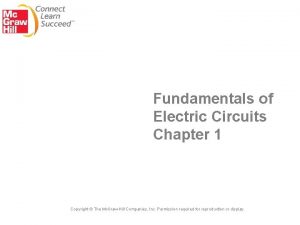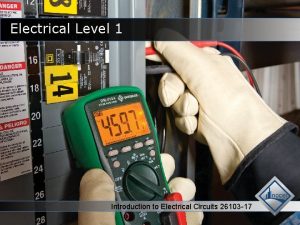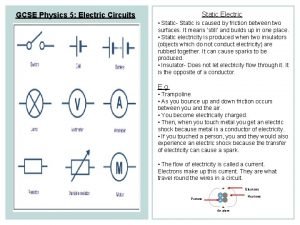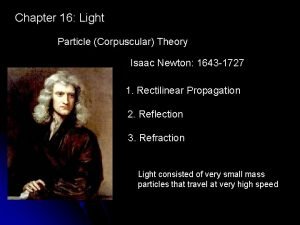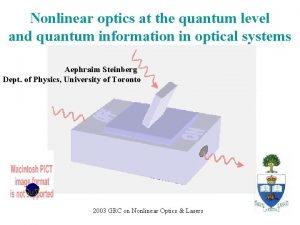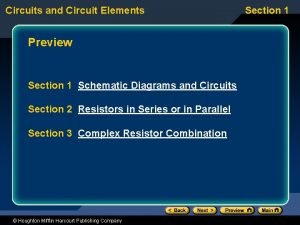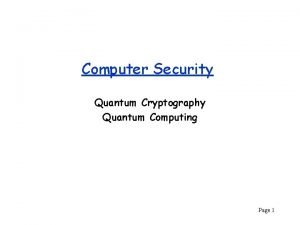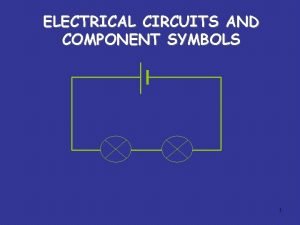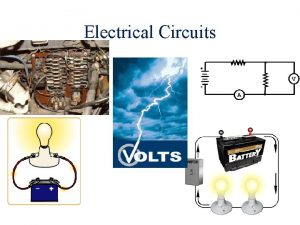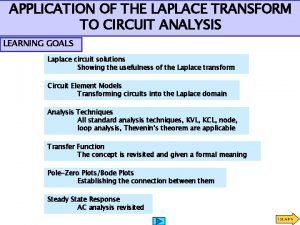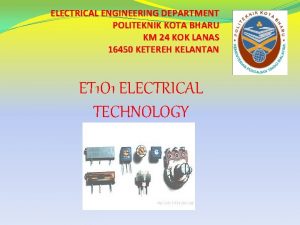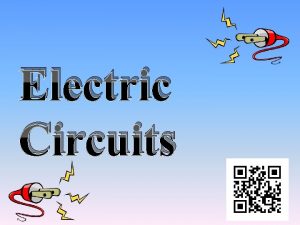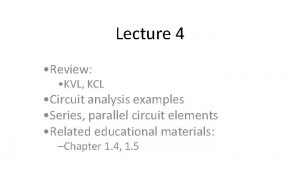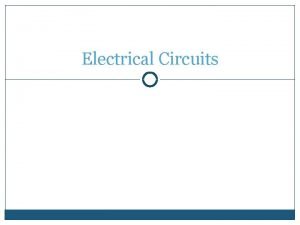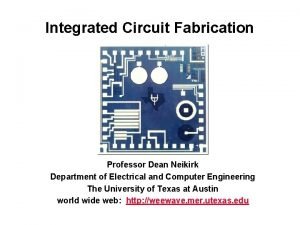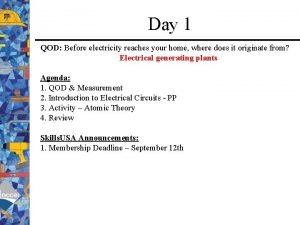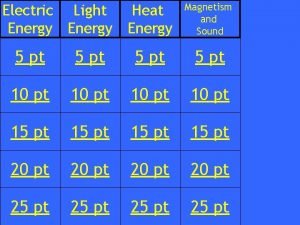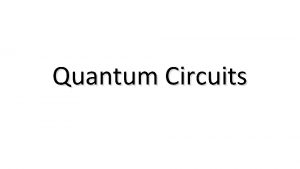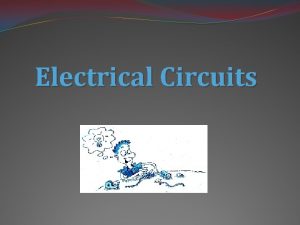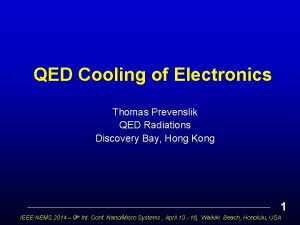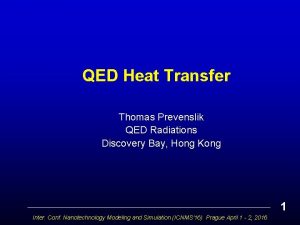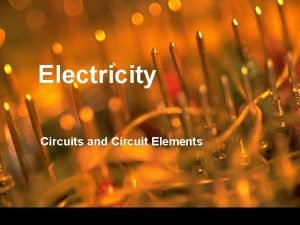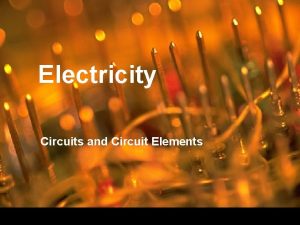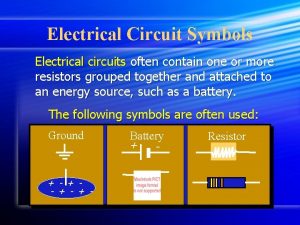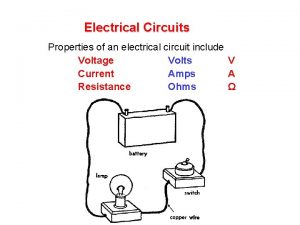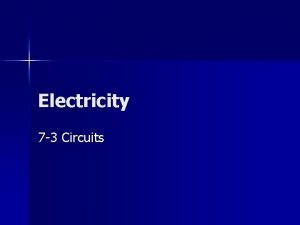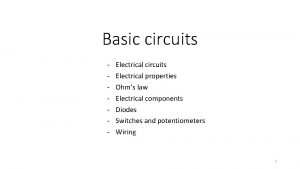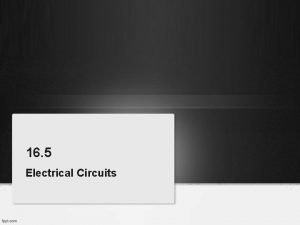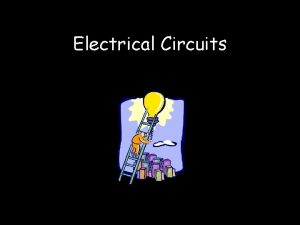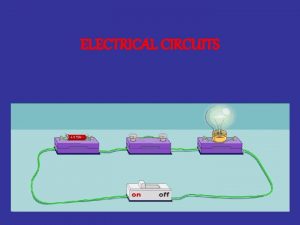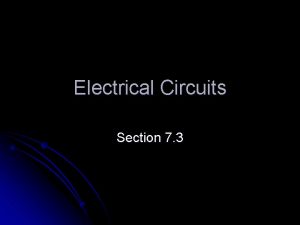Quantum Optics with Electrical Circuits Circuit QED Experiment




































- Slides: 36

Quantum Optics with Electrical Circuits: ‘Circuit QED’ Experiment Rob Schoelkopf Michel Devoret Andreas Wallraff NSF/Keck Foundation David Schuster Center Hannes Majer Luigi Frunzio for R. Vijayaraghavan Quantum Information Physics Irfan Siddiqi (Berkeley) Michael Metcalfe Chad Rigetti Yale University Andrew Houck Blake Johnson Theory Steven Girvin Alexandre Blais (Sherbrooke) Jay Gambetta Jens Koch K. Moon (Yonsei) Terri Yu Lev Bishop Joe Chen (Cornell) Cliff Cheung (Harvard) Daniel Rubin Aashish Clerk (Mc. Gill) R. Huang (Taipei)

Quantum Computation and NMR of a Single ‘Spin’ ½ Quantum Measurement Vds Vgb Cgb Box Cc Cge SET (After Konrad Lehnert) 2 Vge

State of the Art in Superconducting Qubits • Nonlinearity from Josephson junctions (Al/Al. Ox/Al) Charge/Phase Flux Phase NEC/Chalmers Junction size Saclay/Yale EJ = E C TU Delft/SUNY NIST/UCSB # of Cooper pairs • 1 st qubit demonstrated in 1998 (NEC Labs, Japan) • “Long” coherence shown 2002 (Saclay/Yale) • Several experiments with two degrees of freedom • C-NOT gate (2003 NEC, 2006 Delft and UCSB ) • Bell inequality tests being attempted (2006, UCSB) So far only classical E-M fields: atomic physics with circuits Our goal: interaction w/ quantized fields Quantum optics with circuits 3 Communication between discrete photon states and qubit states

Atoms Coupled to Photons 2 s 2 p Irreversible spontaneous decay into the photon continuum: 1 s Vacuum Fluctuations: (Virtual photon emission and reabsorption) Lamb shift lifts 1 s 2 p degeneracy Cavity QED: What happens if we trap the photons as discrete modes inside a cavity? 4

Microwave c. QED with Rydberg Atoms beam of atoms; prepare in |e> 3 -d superconducting cavity (50 GHz) vacuum Rabi oscillations observe dependence of atom final state on time spent in cavity measure atomic state, or … Review: S. Haroche et al. , Rev. Mod. Phys. 73 565 (2001) 5

c. QED at Optical Frequencies State of photons is detected, not atoms. … measure changes in transmission of optical cavity 6 (Caltech group H. J. Kimble, H. Mabuchi)

Cavity Quantum Electrodynamics (CQED) 2 g = vacuum Rabi freq. k = cavity decay rate g = “transverse” decay rate transition dipole D. Walls, G. Milburn, Quantum Optics (Spinger-Verlag, Berlin, 1994) vacuum field 7

A Circuit Analog for Cavity QED 2 g = vacuum Rabi freq. k = cavity decay rate g = “transverse” decay rate out m ~ transmission l = line “cavity” L c 5. 2 Cross-section of mode: DC + 5 mm 6 GHz in B E Lumped element equivalent circuit Blais, Huang, Wallraff, SMG & RS, PRA 2004 - + + 10 mm 8

Implementation of Cavities for c. QED Superconducting coplanar waveguide transmission line Q > 600, 000 @ 0. 025 K Optical lithography at Yale 1 cm Niobium films gap = mirror 6 GHz: • Internal losses negligible – Q dominated by coupling 9

Circuit Quantum Electrodynamics elements • cavity: a superconducting 1 D transmission line resonator • artificial atom: a Cooper pair box (large d) A. Blais, R. -S. Huang, A. Wallraff, S. M. Girvin, and R. J. Schoelkopf, PRA 69, 062320 (2004) 10

Artificial Atom Superconducting Tunnel Junction (The only non-linear dissipationless circuit element. ) Al superconductor Al 2 Ox tunnel barrier Al superconductor Josephson Tunneling Splits the Bonding and Anti-bonding ‘Molecular Orbitals’ Covalently Bonded Diatomic ‘Molecule’ anti-bonding 11

SPLIT COOPER PAIR BOX QUBIT: THE “ARTIFICIAL ATOM” with two control knobs E 1 hn 01 E 0 THE Hamiltonian 12 [Devoret & Martinis, QIP, 3, 351 -380(2004)]

First Generation Chip for Circuit QED Nb Si Al No wires attached to qubit! Nb First coherent coupling of solid-state qubit to single photon: A. Wallraff, et al. , Nature (London) 431, 162 (2004) Theory: Blais et al. , Phys. Rev. A 69, 062320 (2004) 13

Advantages of 1 d Cavity and Artificial Atom quantized electric field Vacuum fields: mode volume zero-point energy density enhanced by ERMS ~ 0. 25 V/m L ~ l = Transition dipole: m c 5. 2 de ui g e v wa le ab c l a i x coa 5 mm Cooper-pair box “atom” 14

Extreme Strong Coupling Limit Maximum dipole moment: energy density mode volume Vacuum electric field: Vacuum Rabi coupling: (independent of d !) Present experiments: 15

Jaynes Cummings Hamiltonian: “dressed atom” picture cavity qubit dipole coupling Dispersive case: Atom is strongly detuned from the cavity Photons do not cause ‘real’ transitions in the qubit…only level repulsion. Cavity and atom frequencies shift. Second order p. t. Qubit ground Qubit excited 16

“dressed atom” picture: 2 nd order perturbation theory Cavity frequency shifts up if qubit is in ground state; down if qubit in excited state. Qubit ground Qubit excited 17

c. QED Dispersive Measurement I: atom strongly detuned from cavity A. Blais, R. -S. Huang, A. Wallraff, S. M. Girvin, and RS, PRA 69, 062320 (2004) 18

Coherent Control of Qubit in Cavity signal for pure excited state 85 % contrast signal for gnd state Rabi oscillations consistent with 100% fidelity of qubit rotation

High Visibility Rabi Oscillations (i. e. inferred fidelity of operation) Indicates no undesired entanglement with environment during operations. A. Wallraff, D. I. Schuster, A. Blais, L. Frunzio, J. Majer, MHD, SMG, and RJS, Phys. Rev. Letters 95, 060501 (2005). 20

Spectroscopy of the qubit When qubit is excited cavity responds Q > 20, 000 !!! 21

Backaction of QND Measurement AC Stark shift of qubit by photons AC Stark measurements: Schuster et al. , PRL 94, 123602 (2005).


Need to increase coupling strength Want bigger coupling…. Make a bigger atom! Old New Resonant Dispersive 24

Resolving Photon States in a Circuit. . . • # distribution visible in spectroscopy • Peaks well separated • Well into dispersive limit

Resolving individual photon numbers using ac Stark shift of qubit transition frequency Coherent state Poisson distribution Thermal state Bose-Einstein distribution Master Eqn. Simulations Master eqn. simulations show that homodyne signal is an 26 approximate proxy for cavity photon number distribution.

Waves and Particles Coherent State: Many Photons Laser Single Photons Laser ? ? ? What is the electric field of a single photon?

Purcell Effect: Low Q cavity can enhance rate of spontaneous emission of photon from qubit qu bit cavity bit qu cavity Photon emission becomes dominate decay channel. Maps qubit state onto state of flying qubit (photon field): Intrinsic non-radiative decay rate Cavity enhanced decay rate

Oscillations in Electric Field? p pulse 2 p pulse No average voltage for Fock states! Phase completely uncertain! 29

Oscillations in Electric Field? p/2 pulse Arbitrary pulse ? 30

Mapping the qubit state on to a photon Zero at p Measured qubit state Measured photon state Maximum at p/2 31

“Fluorescence Tomography” • Apply pulse about arbitrary qubit axis • Qubit state mapped on to photon superposition Qubit all of the above are data! 32

Future Possibilities Cavity as quantum bus for two qubit gates High-Q cavity as quantum memory Cavities to cool and manipulate single molecules? 33

SUMMARY Cavity Quantum Electrodynamics c. QED “circuit QED” Coupling a Superconducting Qubit to a Single Photon -first observation of vacuum Rabi splitting -initial quantum control results -QND dispersive readout -detection of particle nature of microwave photons -single microwave photons on demand 34

‘Circuit QED’ Strong Coupling of a Single Photon to a Cooper Pair Box http: //pantheon. yale. edu/~smg 47 http: //www. eng. yale. edu/rslab/c. QED • “Cavity Quantum Electrodynamics for Superconducting Electrical Circuits: an Architecture for Quantum Computation, ” A. Blais et al. , Phys. Rev. A 69, 062320 (2004). • “Coherent Coupling of a Single Photon to a Superconducting Qubit Using Circuit Quantum Electrodynamics, ” A. Wallraff et al. , Nature 431, 162 (2004). • “AC Stark Shift and Dephasing in a Superconducting Qubit Strongly Coupled to a Cavity Field, ” D. I. Schuster, et al. , Phys. Rev. Lett. 94, 123602 (2005). • “Approaching Unit Visibility for Control of a Superconducting Qubit with Dispersive Readout, ” A. Wallraff et al. , Phys. Rev. Lett. 95, 060501 (2005). • “Resolving Photon Number States in a Superconducting Circuit”, Nature (Feb. 1, 2007) 35

Resolving individual photon numbers using ac Stark shift of qubit transition frequency Coherent state Poisson distribution Thermal state Bose-Einstein distribution Master Eqn. Simulations Master eqn. simulations show that homodyne signal 36 is an approximate proxy for cavity photon number distribution.
 Difference between ray optics and wave optics
Difference between ray optics and wave optics Venn diagram of geometric optics and physical optics
Venn diagram of geometric optics and physical optics Superconducting devices in quantum optics
Superconducting devices in quantum optics Modern optics experiment
Modern optics experiment Qed qcd qfd
Qed qcd qfd Thomas prevenslik
Thomas prevenslik Qed
Qed Qed meaning
Qed meaning Qed centennial
Qed centennial Expression for electric potential difference
Expression for electric potential difference Advantages of parallel circuits over series circuit
Advantages of parallel circuits over series circuit Classical mechanics
Classical mechanics Quantum physics vs mechanics
Quantum physics vs mechanics Type of circuits
Type of circuits Planning electrical circuits
Planning electrical circuits Complex numbers in electrical circuits
Complex numbers in electrical circuits Branch loop node formula
Branch loop node formula Copyright
Copyright Nccer introduction to electrical circuits
Nccer introduction to electrical circuits Electrical circuits gcse
Electrical circuits gcse Quantum eraser experiment at home
Quantum eraser experiment at home Quantum light experiment
Quantum light experiment Quantum bomb experiment
Quantum bomb experiment Circuits and circuit elements
Circuits and circuit elements Quantum circuit
Quantum circuit Draw a simple circuit and label the parts
Draw a simple circuit and label the parts Electrical circuit
Electrical circuit Laplace transform circuit analysis examples
Laplace transform circuit analysis examples What three elements are required for all electric circuits
What three elements are required for all electric circuits Politeknik kota bharu
Politeknik kota bharu Draw and label the parts of basic electrical circuit
Draw and label the parts of basic electrical circuit Electrical circuit analysis
Electrical circuit analysis Flashlight electrical circuit
Flashlight electrical circuit Basic electrical circuit
Basic electrical circuit Incomplete electrical circuit
Incomplete electrical circuit An electrical circuit contains at minimum a
An electrical circuit contains at minimum a Electrical circuit
Electrical circuit


